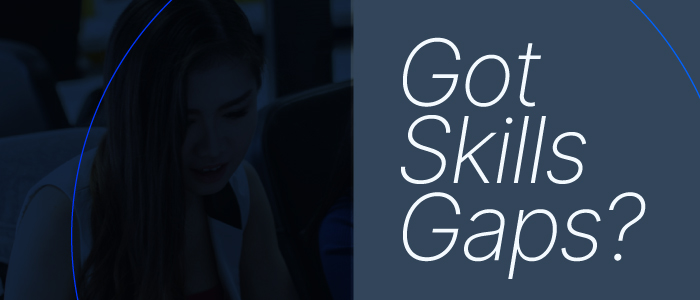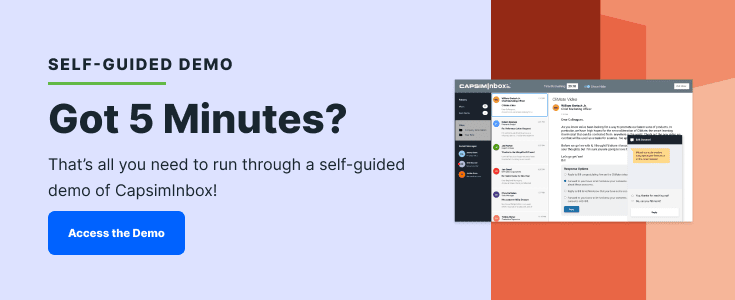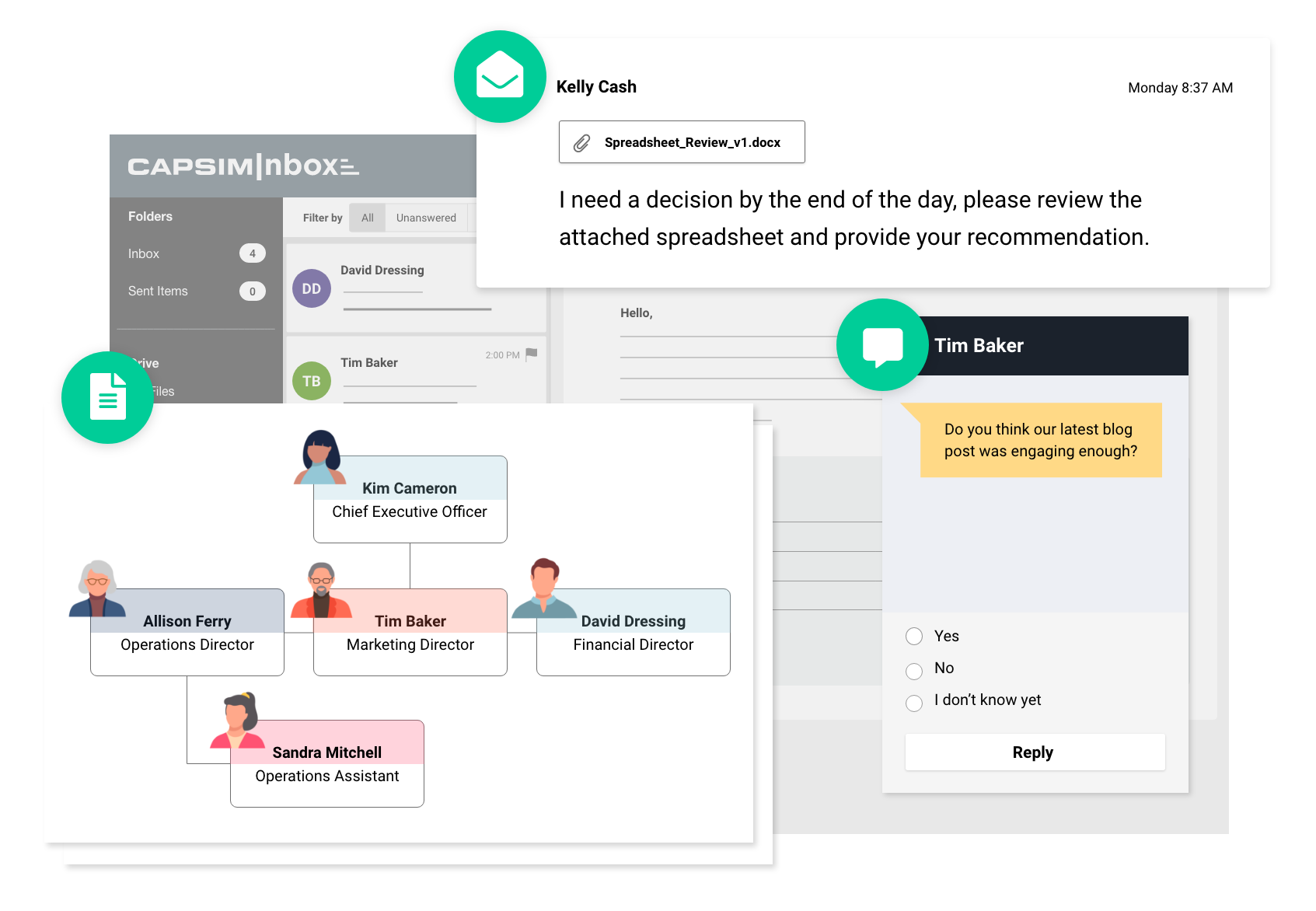How to Perform a Skills Gap Analysis
February 24, 2022

If a chef doesn’t have the right ingredients, it’s nearly impossible for them to craft the exact dish they envision. The same is true for companies.
During unprecedented change and innovation, many companies realize they don’t currently have the right people and skillsets to achieve their goals. According to a 2020 McKinsey study, 87 percent of executives say they are currently experiencing skills gaps or expect to within the next few years.
But knowing you have skills gaps and knowing what skills you lack are two different things. That’s why a skills gap analysis is a powerful tool for learning and development teams.
But how do you accurately identify skills gaps? We’ll cover the what, why, and how of skills gap analyses so you can implement the same process and help steer your organization to success.
A Quick Refresher on Skills Gap Analyses
What is a Skills Gap Analysis?
A skills gap analysis is a process aimed at identifying gaps in necessary skills for the job that needs to be done.
Throughout this post, we’ll follow the journey of a data professional named Megan. She has been working in data analytics for nearly a decade, but changes to her organization’s technical suite have affected her job performance and output.
Step by step, we’ll explore how a skills gap analysis can help both Megan and her employer succeed.
Why are Skills Gap Analyses Important for L&D Professionals?
Before we get into the steps, let’s take a moment to establish the answer to the following question: Why should you care about skills gap analyses?
Skills gap analyses are essential in the modern workplace. As your organization evolves, you need to ensure you’re taking the proper steps to help your workforce evolve with it. Skills gap analyses can help you be proactive regarding these changes. By identifying skills gaps early and planning to fill them, you can keep your employees—and your organization—ahead of the competition.
You can also use skills gap analyses to shape and prioritize your L&D efforts and maximize your corporate learning and development ROI. By taking the time to identify your employees’ strengths and weaknesses, you’ll have an easier time selecting technical and soft skill training topics that will be useful to your workforce.
Identifying skills gaps can also help your organization remain aligned on company-wide goals and initiatives. As you’ll see in our step-by-step walkthrough later in this post, a skills gap analysis requires you to identify and agree upon goals for your workforce and your business.
The last benefit of skills gap analyses is employee empowerment. You can provide employees with the data from their skills gap analysis. Taking this step will allow them to understand their weaknesses, enabling them to work toward their own improvement.
When Should You Use a Skills Gap Analysis?
Conducting a skills gap analysis is not a one-and-done process. Your business is always evolving, and technology is always changing. As a result, new solutions always need to be implemented. These truths mean you’ll need to conduct skills gap analyses regularly.
Some common triggers for conducting an analysis include:
- Missed Targets: If a department—or your business as a whole—are consistently missing targets, it’s time to see where your weaknesses are.
- Changes in Business Strategy: If your business is changing course, you need to ensure your workforce is prepared to change with it.
- New Tool Implementation: You want to keep up with the latest technology—ensure your employees are prepared to tackle the learning curve.
How to Perform a Skills Gap Analysis in 5 Steps
There are five key steps to lay the foundation for performing a successful skills gap analysis:
- Review your company’s objectives and goals.
- Identify “future of work” trends that will impact your company.
- Make a comprehensive list of skills required.
- Assess current workforce skills.
- Identify assessment data to identify skills gaps.
Let’s dive into more detail on each.
Step 1. Review Your Company’s Objectives and Goals
Alignment is necessary to the success of any organization. Begin your skills gap analysis by reviewing organizational goals and targets with key stakeholders. To ensure all parties are on the same page, you should involve the C-suite, executives, and VPs.
If you skip this alignment, you may end up wasting time and resources checking for irrelevant gaps.
Related Read: 5 Leadership Soft Skills Your Managers & Executives Need for Success
When you take the time to coordinate your L&D efforts with the organization’s overall goals, you demonstrate how L&D can contribute to the business's success. Establishing the ways your training efforts contribute to organizational outcomes can make it easier for you to gain high-level support—and necessary resources—for future initiatives.
It’s important to ensure your training aligns with specific, measurable goals. This step is doubly essential to your skills gap analysis success if your business has recently changed its business model or plans to soon.
Example:
Megan’s organization is undergoing an initiative to centralize all reporting. A part of this effort involves swapping out their old tool, Access, for a series of new, web-based reporting tools. Establishing the goal of centralized reporting and efficient use of the updated technology is essential to planning the skills gap analysis Megan and her team will undergo.
Step 2. Identify “Future of Work” Trends that Will Impact Your Company
Your next step is to identify any trends that may impact your company. Your organization does not operate within a bubble, nor should your training efforts. You need to consider trends that originate outside of your organization.
For example, are any jobs in your organization at risk of becoming obsolete due to changing technology? On the other hand, do you foresee technological changes that will require you to create new positions to keep up with the changing market?
Related Read: The Top 5 Trends in Learning and Development
Keeping up with industry changes and future-of-work trends will help ensure your organization is prepared to take the steps needed to remain at the forefront of performance and efficiency in your space.
Example
Megan’s organization has changed quite a bit over the past few years due to the COVID-19 pandemic. Much of the workforce switched to remote positions temporarily. The changes wrought by the pandemic have encouraged the company's leadership to embrace fully-remote positions permanently to remain competitive in the recruiting space.
These changes have required implementing multiple new tools and are the impetus behind switching to a web-based reporting tool rather than a locally hosted solution. These trends and the company’s reactions will impact the future of work at Megan’s organization—and the skills gap analysis needed to ensure success.
Step 3. Make a Comprehensive List of Skills Required
Once you understand your organization’s goals and the outside factors and trends that may impact your company, you’re ready to begin planning the skills gap analysis itself.
Make a list of all the skills needed to achieve the goals your leadership has outlined. Include any additional skills required to keep up with changing industry trends.
NOTE: Don’t forget to include soft skills! You’ll need to test for technical skills, but every position requires a robust set of soft skills as well. For your skills gap analysis to succeed, you’ll need to know how to effectively measure soft skills. If you neglect to test for this skill, your skills gap analysis will not be as impactful as possible.
Once you have your list of skills, you’ll want to align those skills with current roles at your organization. If no current role fits a necessary skill you’ve identified, you may need to hire new talent or create a new role to account for that skill.
Example:
Looking at the skills required for success in Megan’s department, you identify soft skills like attention to detail, collaboration, and problem-solving. Additionally, you identify technical skills, including data visualization, proficiency with your new data analytics tool, and SQL knowledge.
Step 4. Assess Current Workforce Skills
You know the skills your organization needs to succeed in the near future. Now, it’s time to assess the skills of your current workforce.
Establish a baseline for each employee and department in your organization. You will then use this baseline data to compare with the necessary skills you identified in step 3 above.
How can you gather this baseline data? You have four main options:
- Job Performance Metrics: Take a look at the existing metrics your organization measures employee performance against. The upside of this method is that the data may be readily available. However, you may not have ready-made data on the specific skills you’re looking to study.
- One-on-One Conversations: Speak to each employee about their job performance (or require management to do so for their teams and document the results of the conversation). This type of analysis can be very in-depth. However, it is also very time-consuming and may be inaccurate as it relies on employee self-evaluation.
- Digital Assessments: Provide a test or questionnaire to each employee to analyze their proficiency level on the skills you are examining. A positive of digital assessments is that they can be completed quickly. However, they also rely on employee self-evaluation, making them less accurate.
- Simulation-Based Assessments: Use a simulation like the ones provided by CapsimInbox to measure and study your employees’ skills in a real-world scenario. This method is incredibly accurate and provides measurable results. However, creating custom simulations can be time-consuming.
Example:
To get starting data for Megan and her team, you decide to use a simulation. One of CapsimInbox’s ready-to-use simulations was a great fit for your use case, so you’re able to provide the simulation to your team quickly.
The simulation walks Megan and the other data analysts through several guided scenarios that mimic their real-world job duties. This allows you to accurately assess their performance and skill level in various tasks.
Step 5. Analyze Assessment Data to Identify Skills Gaps
Once you have baseline data on your workforce’s proficiency in the skills you’re examining, it’s time to analyze the data.
Compare each employee’s performance in the evaluation, simulation, or assessment to the necessary skill level associated with proficiency in that task. You can then compare that data to the skills you identified back in step three.
Is there a gap between the skills necessary to achieve your organization’s goals and the skills your employees are proficient in? Any such gaps are skill gaps in your organization.
Armed with the knowledge of where skills gaps exist in your team and organization, you can now make a plan. What training does your workforce need to close those gaps? Does your organization need to create new positions or hire new talent to fill the gaps? These are all questions you now have the tools to answer.
Example:
After completing the analysis, you realize that Megan isn’t the only team member struggling. You find skills gaps related to your new software as well as gaps in soft skills related to remote work, like written communication and self-motivation.
You realize that you need to provide team training on soft skills organization-wide. Additionally, you recommend hiring a technical specialist to serve internally as the functional administrator for your new reporting software.
Use Your Skill Gap Analysis to Create a Training Plan
Completing a skills gap analysis empowers your L&D team to determine topics for training and development initiatives that will be useful to team members and overall business objectives. Consider providing employees with the results of their skills gap analysis. This information can help your workforce realize the value of your training opportunities, increasing engagement.
As discussed previously, you may find that training alone cannot close all your skills gaps. In this case, you’ll want to consider hiring outside experts or new talent to fill overall gaps in the organization without overwhelming your current workforce with new responsibilities and information.
REMEMBER: Skills gap analyses aren’t a one-and-done process. You should be conducting a new analysis at least once a year. Ensure that you are including future skills gap analyses in your L&D plan for each year.
You Know the Steps to Perform a Skills Gap Analysis…Now What?
Knowing the steps to conduct an effective skills gap analysis is an excellent first step, but your journey isn’t over just yet. Next, you need to determine how you want to proceed with skills gap analyses in your organization.
The marketplace has no shortage of tools or methods that can help you conduct skills gap analyses. You need to ensure you choose a tool that allows you to maintain baseline data and track employee progress—the more unbiased, the better.
Additionally, you’ll need a tool to help you conduct impactful training sessions centered around the identified skills gaps. We don’t mean check-box training; we mean training efforts that can lead to real, lasting employee growth.
Simulations are a natural fit.
Simulation tools like CapsimInbox provide assessments, skill gap analysis tools, learning modules, and progress-tracking all in one tool. You can also use simulations to conduct microlearning modules. These modules can be completed in 30 minutes or less, making them more engaging and less intrusive on the workday.
Check out CapsimInbox to see how our life-like, ready-to-use, or custom simulations can help your employees reach their maximum potential. Test drive our platform today to see for yourself!





.png?width=80&name=1-questions%20(1).png)